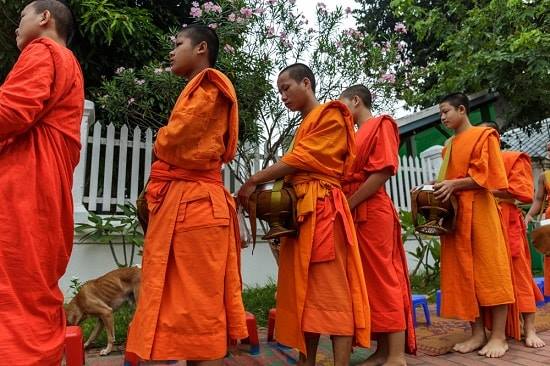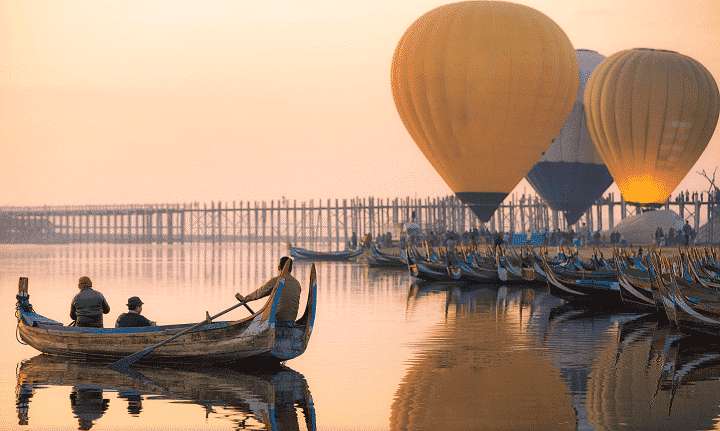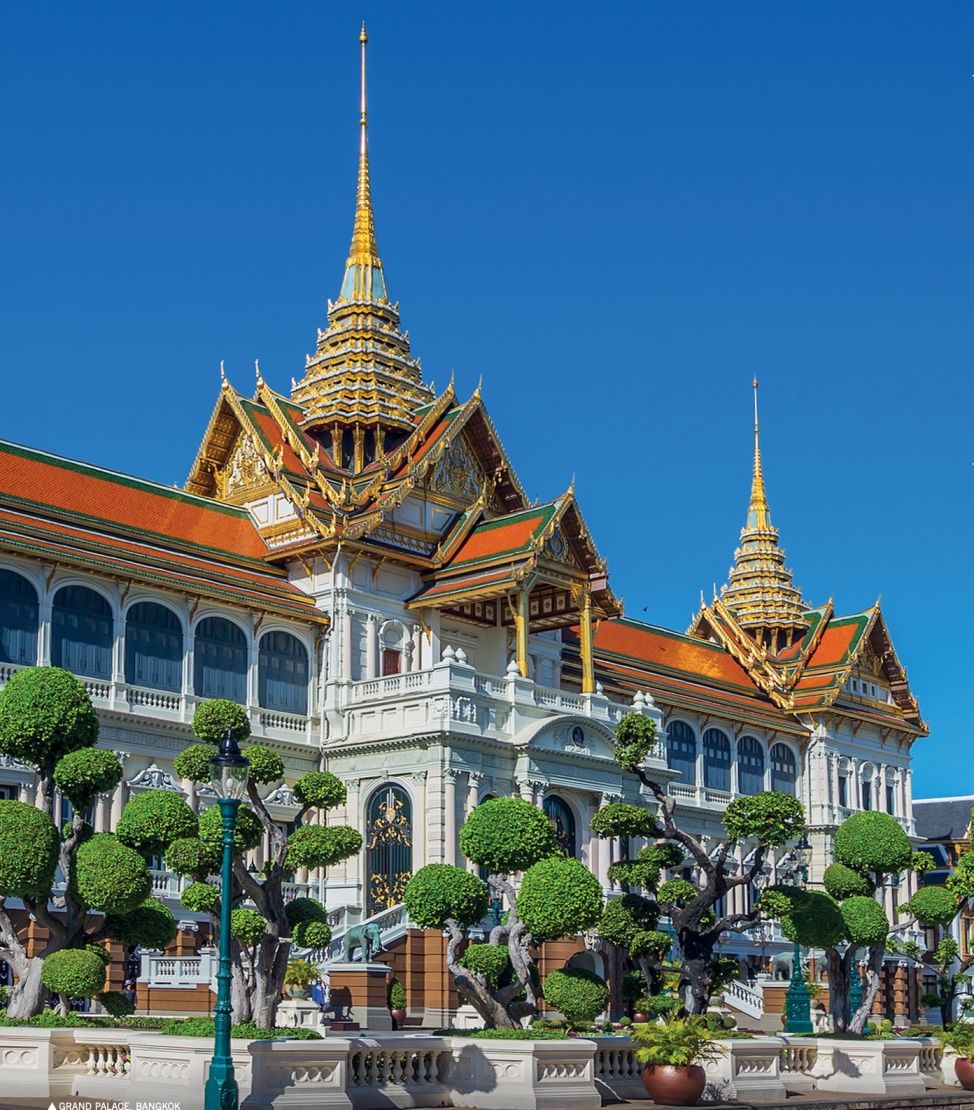BEST TIME TO VISIT THAILAND
Best time to visit most of Thailand is between November and late February, because it rains the least and it is not too hot and temperatures range from 29°C to 34°C. This period is also Thailand’s main season for festivals, like Loi Krathong.
Thailand’s peak tourist season runs from November to late March, with secondary peaks in July and August. If you want to avoid crowds and take advantage of discounted room rates in most of resorts and hotels, so for best time of year to visit thailand consider travelling during the least crowded months (typically April to June, September and October).
If you plan to holiday on the northern provinces, the hot season (March to May) and early rainy season (June to July) are not bad either, as long as temperatures are moderate at higher elevations.
Northeastern and central Thailand, on the other hand, are best avoided from March to May, when temperatures may climb over 40°C. Because temperatures are more even year-round in the south (because it’s closer to the equator), the beaches and islands of southern Thailand are a good choice for respite when the rest of Thailand is miserably hot.
Although the rainy season (roughly July to October) gets a bad reputation, there are some bonuses: temperatures tend to be cooler, tourists are fewer and the landscape is lush and green. Depending on the region and the month, the rains might be hour-long downpours in the afternoon. October, however, tends to be the wettest month.
Best Time to Visit Bangkok and Northern Thailand
Travelers first and foremost question is when to visit Bangkok and northern Thailand? At the centre of the flat, humid Mae Nam Chao Phraya delta, Bangkok sits at the same latitude as Khartoum and Guatemala City, and can be as hot as the former and as wet as the latter.
Recommended time to visit Bangkok Thailand
The southwest monsoon arrives between May and July and lasts into November. This is followed by a dry period from around November to May, which begins with lower relative temperatures until mid-February (because of the influence of the northeast monsoon, which bypasses this part of Thailand but results in cool breezes), followed by much higher relative temperatures from March to May. It usually rains most during August and September, though floods in early October may find you in hip-deep water in certain parts of the city. An umbrella can be invaluable – a raincoat will just make you hot.
It’s worth remembering that we’re talking about the weather here, a temperamental beast if ever there was one. So all the dates above are flexible. In 2008, for example, Bangkok was flooded by a major storm in normally dry January, and the cool season stretched well into March.
Best time to visit Chiang Mai
Chiang Mai has much the same climate as adjacent provinces in the north. Most visitors will find the weather is most enjoyable from November to mid-February, when temperatures are mild and rain is scarce. During the cool season (December to February), temperatures can warrant a jacket or pullover at night, particularly at higher elevations.
Chiang Mai Burning Season
In addition, the burning season starts from February until the monsoon season begins in late May or June, a thick haze often forms over the city, a combination of dust and smoke from the burning off of rice fields near the city.
Hot Season in Chiang Mai Thailand
The hot season (March to May) can be brutal in Chiang Mai, although temperatures don’t burst the thermometer as much as they do in Lampang or in northeastern Thailand. You’ll find some relief from the heat (and to a lesser extent, the smoke) at the cooler elevations of Chiang Dao and Doi Inthanon, or anywhere else where you can get above the Mae Ping plains.
The annual monsoons are generally lighter in Chiang Mai than in central or southern Thailand, lasting from June to October, and rarely into November. Chiang Mai city can flood when rains are unusually heavy.
Best Time to Visit Thailand’s Beaches
The best time to visit the Thailand group of Samui islands is during the hot and dry season, from February to late June. From July to October (southwest monsoon) it can rain on and off, and from October to January (northeast monsoon) there are sometimes strong winds. However, many travellers have reported fine weather (and fewer crowds) in September and October. November tends to receive some of the rain that affects the east coast of Malaysia.
What about best time to visit Gulf of Thailand?
The areas of the Gulf of Thailand and islands such as Koh Samui or Koh Pha-Ngan are best to visit anytime between January and August, when climate isn’t rainy and the sky is almost sunny everyday.
Best time to visit Phuket & West Andaman Coast Region in Thailand →
Best time of the year to visit Phuket & west Andaman coast in Thailand, including Khao Lai, Krabi, Koh Phi Phi as well as Koh Lanta would be the dry season from the months of December to March and there is little change in the weather over the time of the year with the temperature between 30 – 35 degrees°C. The whole coasts of Phuket and west Andaman coast enjoys only two distinct seasons (Unlike other parts of Thailand) The hot and cool. The temperature may drop from May to October when its vary from 24 to 30°C with some rains during the day, however, this isn’t significant and you may not notice it at most of the times.
What to Pack for Thailand [Total Thailand Packing List]
In addition on best time to visit Thailand as shown above, now it’s time to decide of what to pack. Begin with lightweight and breathable clothing to combat the tropical climate. Pack essentials like swimwear, comfortable walking shoes, and a versatile hat for sun protection. Don’t forget insect repellent to ward off pesky mosquitoes.
Thailand Packing List for Men
Men are recommended to pack up some Collared shirts, polo T shirts, comfy shorts or semi casual pants while for women, shoulder covering T-shirts or tops, skirts, shorts and dresses made of cottons are recommended and best given the high humidity climate in Thailand.
To visit temples and other religious monuments and attractions anywhere in Thailand, you should be dressing modest, wear something to cover shoulders and knee or just wear a long dress. It is also advised to carry a long light scarf that cover your shoulders.
Wifi is available everywhere. Stay connected with a local SIM card and have offline maps handy for navigation. Lastly, pack an open mind and adventurous spirit to fully embrace the enchanting beauty of Thailand. Follow this comprehensive guide on best time to travel to Thailand to ensure a stress-free and memorable journey in the Land of Smiles!
In addition, Northern provinces of Thailand can be extremely chilly with light breezes in the evening and during the winter months, so pack a light jacket if you are planning to travel to Chiang Mai or any northern provinces between the months of November to February.
Looking for Holidays to Thailand? Find the best Thailand packages today! At first build your own perfect holiday plan by booking best resorts and tours that cover wherever you wish to visit. In addition, find discounts on the best Thailand Tour Packages →
Copyright 2013-2017 Vietnamese Private Tours Ltd With Vietnam Luxury Travel








